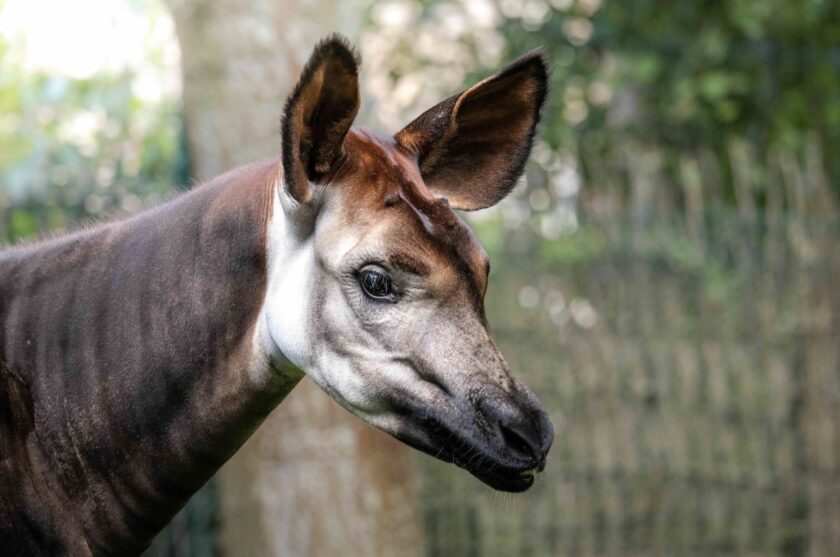Chester Zoo joins Oxford Uni ‘poo zoo’ science project

Elephant, okapi and giraffe dung from Chester Zoo is being used to harvest living animal cells for future scientific breakthroughs.
Oxford University researchers recently revealed they are trialling new techniques to isolate, wash and culture living cells to store them for conservation purposes.
Scientists say these methods could offer a lifeline to species on the brink.
Professor Suzannah Williams set up the “Poo Zoo” last year with funding from conservation non-profit Revive and Restore.
Her team includes Dr Rhiannon Bolton, who is carrying out research on dung donated by animals in the care of Chester Zoo.
Rhiannon, a researcher based at the zoo, said: “If this works, it could be a total game-changer. Right now, UK veterinary guidelines mean you can only collect genetic samples in very specific circumstances, or following death, which limits the samples you can collect.
“It’s early days yet, but this would allow us to collect cells from a far broader range of animals than we currently can, both individuals within a species and in terms of different species.
“It would make collecting and storing living animal cells non-invasive, cost-effective and efficient.”
Chester Zoo is contributing various samples to the project. These include dung from elephants, giraffes, okapis, and lion scat. The collection process is quite low-tech and generally involves a dustpan and brush. Things get more complex once the samples reach the lab.
Rhiannon said: “The keepers and scientists at the zoo pick up samples left in animal habitats. Because these are new techniques, we’re trying to collect the freshest samples possible, so I’ll get a delivery to the zoo lab, which is processed here. The clean cells are then posted to Oxford on the same day, where they are cultured by research assistant Janet Kwan.
“We’re looking at a range of animals as the cells from some species might be harder to culture than others. It’s likely that the techniques will have to be tweaked for different species.”
Rhiannon explained that the faecal matter was processed to strip away anything left by the animal’s diet or bacteria, allowing scientists to separate out living cells from the donor animal, which can then be extracted and cultured.
These living cells have the potential to be used to create stem cells further down the line. Stem cells in turn could become sperm and egg cells, which would be used in conservation breeding.
She added some faecal samples were easier to work with than others, not for scientific reasons but because of the smell. Samples from herbivores are, she said, “less offensive” than those left by predators.
Currently, the samples must be collected quickly to ensure their freshness, so zoo animals are the perfect donors, but this technique could one day be used in the field, preserving cells from rare animals in the wild.
The Chester Zoo team are no strangers to dealing with dung. They have a long-running endocrinology programme where faecal samples are used to track the health of animals living at the zoo.
By testing hormones in animal scat, scientists at the zoo can tell whether a rhino is feeling romantic, or a bear is being broody.
But the “poo zoo” is something new.
Dr Sue Walker, Head of Science at Chester Zoo, said: “Faecal testing is integrated into the daily care of our animal species. We use it to monitor the reproductive and overall health of the animals.
“For instance, we track progesterone in the females which allows us to predict their cycles and lets us know when they are likely to be receptive to a breeding partner, and hormonal analysis also gives us a picture of how they respond to their environment. It helps us offer them optimal care.
“Both methods have one thing in common: they are non-invasive. But they are very different in many ways. Our established endocrinology techniques focus on monitoring hormones. The results help us understand the physiology of one of our eastern black rhinos, for instance. Each test gives us a snapshot of their health status. Put together over time, the data gives us a fuller understanding of them during their lifetime. It’s about the animal’s past and present.
“In contrast, the poo zoo is about the future. In this case, we are collecting for cells rather than hormones. The goal is to bank them so they can be used to prevent extinctions.”
Meanwhile, as the ‘poo zoo’ samples leave zoo premises to be tested by the researchers at Oxford, the zoo is collecting living cell tissues stored on site through cryobanking.
Dr Walker said: “All the tissues we have cryobanked (kept frozen at -196 degrees Celsius) were taken from animals who have reached the end of their lives.
“As a conservation zoo, many of the animals we look after are critically endangered. This means their genetics are extremely valuable to the survival of a species as a whole. As science advances, these methods could offer a lifeline to species on the brink.”
Spotted something? Got a story? Send a Facebook Message | A direct message on Twitter | Email: [email protected] Latest News









